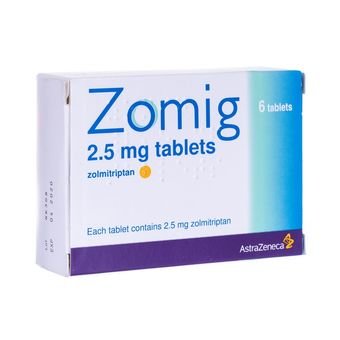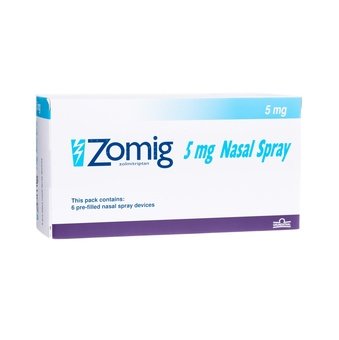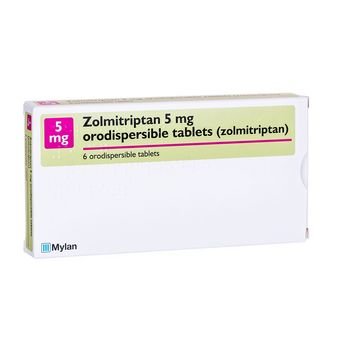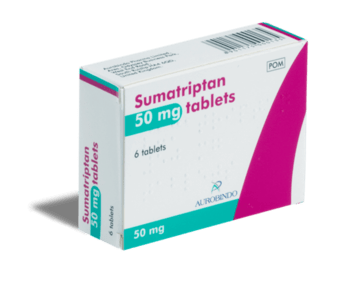Migraine Prodrome: About, Symptoms & Treatment Options
Migraines are a complex condition that is often debilitating and agonising for those who suffer from them. Understanding more about migraines, specifically the various stages, symptoms, different types, and treatment options, can help those who suffer to be proactive at the onset and minimise pain as best as possible.
In this article, we’ll look at the first stage of a migraine attack, the prodrome phase. Below you’ll find a detailed explanation of the migraine prodrome phase, symptoms to look out for, and pain relief treatment options available.
Stages of a migraine?
There are five recognisable stages of a migraine attack:
- Premonitory stage: This is a warning stage of a migraine attack and can last from 1 to 24 hours, causing a variety of mental and physical changes. Symptoms include tiredness, food cravings, mood changes, neck stiffness, and frequent yawning.
- Aura: Approximately a third of migraine sufferers will experience a migraine with aura. Migraine without aura does not include this stage of a migraine attack. This stage consists of various neurological symptoms, such as changes in sight, vertigo or weakness, and changes in hearing and speech. This stage generally lasts from 5 to 60 minutes and occurs before the headache or main attack stage.
- Headache or main attack: This stage involves moderate to severe throbbing pain in the head. This pain generally occurs on one side of the head and can last from 4 hours up to 3 days. Pain can occur all over the head or on both sides. Other symptoms, such as nausea, vomiting and a sensitivity to light, smell, sound, and movement, can occur.
- Resolution: Most migraine attacks generally fade away or suddenly stop if the person vomits or cries a lot. For some people, sleeping for an hour or two is enough to end a migraine attack. For children suffering from a migraine attack, sleeping for even a couple of minutes can be enough to stop the attack.
- Postdrome or recovery: This is the final stage of a migraine attack and can last hours or days. Common symptoms of this stage include feeling drained, ‘hungover’ or fatigued, with other symptoms being similar to those experienced during the premonitory (first) stage.
What is the premonitory (prodrome) phase?
The very first stage of a migraine attack is the premonitory or migraine prodrome stage. It may last up to 24 hours but can last longer for some people. Most people will experience this stage when suffering from a severe migraine. However, not everyone who has a migraine attack will have prodrome symptoms.
Symptoms are typically mild or subtle, making it difficult to gauge how long this stage lasts. Symptoms of this stage can manifest as mental changes and/or physical changes. For some, symptoms may be so subtle that they might not even be noticed. The most common symptoms of prodrome include:
- Food cravings
- Neck stiffness
- Feeling tired
- Changes in mood
- Yawning more than usual
- Feeling thirsty
The migraine prodrome stage can be helpful in determining when a migraine attack is starting. This stage can also signal the appropriate time to start treatment before the attack progresses and the symptoms become severe. Keeping a headache diary can help better understand the causes and symptoms of a person's migraine prodrome stage.
Prodrome vs. Aura
Migraine prodrome and aura are two different stages in a migraine attack. Depending on the severity of symptoms, there can be an overlap between these two stages. Understanding individual symptoms and timeframes for each stage is vital to determine which stage you are experiencing.
While both these stages occur before the headache or main attack stage, there are some specific differences between them.
Migraine prodrome may:
- Last up to 24 hours
- Involve symptoms that cause both physical and mental changes
- Be so mild that they are not noticeable
- Occur before the aura stage
In comparison, the aura stage:
- Tends to last no more than 1 hour
- Involves symptoms that cause sensory changes like vision and hearing
- Generally occurs after the prodrome stage
Migraine prodrome symptoms
Not everyone will experience the same prodrome symptoms, with symptoms ranging in severity and frequency per person. Prodrome symptoms may affect different parts of the body or cause changes in state. Recorded prodrome symptoms include:
Muscular issues:
- Cramp
- Muscle stiffness
- Stiff neck
Mood alterations:
- Anxiety
- Confusion
- Irritability
- Excitable
- Energetic
- Depression
Gastrointestinal issues:
- Constipation
- Diarrhoea
- Vomiting
- Nausea
- Urinating more frequently
Changes in state:
- Food cravings
- Thirstiness
- Difficulty sleeping
- Difficulty speaking
- Feeling cold
- Vivid dreams
- Vertigo
- Dizziness
- Problems concentrating
- Fatigue
- Photophobia (sensitivity to light)
- Hypersomnia (sensitivity to smells)
- Phonophobia (sensitivity to sound)
What to do if you’re suffering from migraine prodrome?
Reduce and manage triggers
In most cases, migraine attacks are triggered by the environment around you, diet, and lifestyle. Finding out what your triggers are and avoiding or reducing exposure to them can help reduce or prevent migraine attacks. For example, red wine, bright lights, nicotine, caffeine, and strong odours are all known triggers.
Try Stress Management Techniques
Stress and migraine attacks often accompany one another. While daily stress cannot always be avoided, management techniques such as meditation, mindfulness, deep breathing, and cognitive behaviour therapy can be implemented to help. For example, if you feel an attack starting due to a stressful situation, try removing yourself and practising some deep breathing techniques to lower your heart rate and reduce the rapid flow of blood to your head.
Stress management techniques can help alleviate or prevent migraines and headaches, especially if they are a significant trigger.
Reduce light brightness and noise
Try lying down or sleeping in a dark and quiet room during the prodrome stage. A dark room and a reduction in noise will help reduce the symptoms of a migraine.
Apply a warm or cold compress
A warm or cold compress – applied to the forehead or back of the neck – may help relieve symptoms. Many people may prefer a cold compress as the cold can have a numbing effect, distracting the brain from the start of the migraine attack.
Hot or warm compresses can help relax tense muscles and may be preferred by those whose migraine has been triggered by tensed muscles.
Drink more water
A common trigger of migraine attacks is dehydration. Staying hydrated may reduce or help prevent migraine attacks. If you are having trouble drinking enough water, try flavouring the water with small amounts of fruit juice, lemon, or lime.
Exercise
Regular exercise to circulate blood flow can help prevent migraine attacks. Exercise stimulates the brain to release endorphins, which are chemicals that fight pain. The release of endorphins also helps to relieve stress and promote sleep. It is not recommended to exercise in the middle of a migraine attack as it will make it worse.
Another way to circulate blood flow during a migraine attack is massage. Try to gently massage your temples (side of the head) in a circular motion. This helps promote blood flow and release tense muscles that can add to the discomfort.
Take OTC medications
OTC painkillers, such as ibuprofen, paracetamol or aspirin, can be used to help relieve prodrome symptoms. Other OTC medications called anti-emetics can be used to help alleviate nausea and vomiting. Talk to your pharmacist or GP about the best migraine cocktail for you.
Take prescription medications
Prescription medications called triptans are designed to provide rapid relief from migraine attacks. Unfortunately, these medications are not used to prevent migraine attacks and should only be taken when you notice the symptoms of a migraine. We list available prescription migraine relief medications available in the UK in the section below.
What does medical literature say you should do if suffering from migraine predome?
Studies have shown that it is effective in treating migraine attacks during the prodrome stage (first stage). While these are still small studies and still need to be replicated on a larger scale, the overall consensus is that it may be appropriate to treat someone if they have a migraine prodrome.
Important studies have assessed the safety and effectiveness of treating migraine attacks during the prodrome stage:
- Luciani R, Carter D, Mannix LK, Hemphill M, Diamond ML, Cady R. Prevention of Migraine During Prodrome With Naratriptan. Cephalalgia. 2000;20(2):122-126.
- Dodick DW, Goadsby PJ, Schwedt TJ, et al. Ubrogepant for the treatment of migraine attacks during the prodrome: a phase 3, multicentre, randomised, double-blind, placebo-controlled, crossover trial in the USA. The Lancet. 2023;402(10419):2307-2316.
- Stępień A, Kozubski W, Rożniecki JJ, Domitrz I. Migraine treatment recommendations developed by an Expert Group of the Polish Headache Society, the Headache Section of the Polish Neurological Society, and the Polish Pain Society. Neurologia i Neurochirurgia Polska. 2021;55(1):33-51.
Migraine Relief Medication Available in the UK
Over-the-counter migraine pain relief medications
These medications do not require a prescription to be able to purchase. OTC migraine medications can be separated into two different categories:
Simple analgesics
These analgesics are non-opioid, meaning that they do not contain any opioids in them. Making it safe to buy without a prescription and use for short-term relief. OTC simple analgesics available in the UK include:
- Paracetamol
- Nonsteroidal anti-inflammatory drugs (NSAIDs) such as aspirin and ibuprofen
Anti-emetics
These medications are used to treat vomiting and nausea. They include:
- Bonine
- Dramamine
These two types (simple analgesics and anti-emetics) of OTC medications can be taken together to help combat the migraine attack and its associated symptoms.
Prescription migraine medications
Prescription medications are only available with a script from either your local GP or an online pharmacy, like Cloud Pharmacy. Prescription medications for migraines include:
- Migraitan tablets: These 50mg tablets contain the active ingredient sumatriptan and are specifically used to alleviate pain and common symptoms of a migraine attack
- Almotriptan tablets: This “triptan” is prescribed when OTC painkillers do not help. Almotriptan is effective in alleviating acute migraines in adults and teenagers
- Imigran nasal spray: This nasal spray is prescribed to alleviate and provide relief from a migraine attack. It can be used for other types of migraine attacks
- Rizatriptan tablets: Rizatriptan is effective in alleviating common symptoms of headaches and migraines
- Sumatriptan tablets: Sumatriptan is prescribed to provide relief of migraine attacks and commonly associated symptoms in adults
- Zolmitriptan tablets: Zolmitriptan is also a “triptan” and is used to provide relief from acute migraines
- Zomig nasal spray: This is a popular anti-migraine treatment that is prescribed to alleviate the signs and symptoms of a migraine headache
- Zomig tablets: Zolmitriptan is the active ingredient in Zomig. This medication is prescribed to provide fast-acting relief from migraines
Following a quick and safe online consultation with a Cloud Pharmacy pharmacist, the most appropriate migraine medication is sent discreetly and quickly to you.
What can you do if you suffer from migraines regularly?
See your local GP if your migraines are lasting longer than usual, getting worse, you are unable to manage them, or if they occur more than once a week. You may need to undergo further testing, such as an MRI scan, to determine if there is another underlying condition that is causing you chronic migraines.
Seek help urgently from a GP or NHS 111 if the migraine lasts more than 72 hours, your aura symptoms last more than an hour at a time or if you have just had a baby or are pregnant.
Conclusion
Migraines are complex conditions that have five specific stages. While the stages of a migraine are defined, the symptoms may affect individuals differently (severity and/or frequency). There are a wide variety of OTC and prescription medications, as well as “at-home” interventions, that are available to help you manage, prevent, and treat migraine attacks as they arise.
At Cloud Pharmacy, we stock a range of OTC and prescription medications that effectively provide migraine pain relief. We provide quick, safe, and private online consultations with our pharmacists to ensure that you are able to get the correct medication when you need it.




















